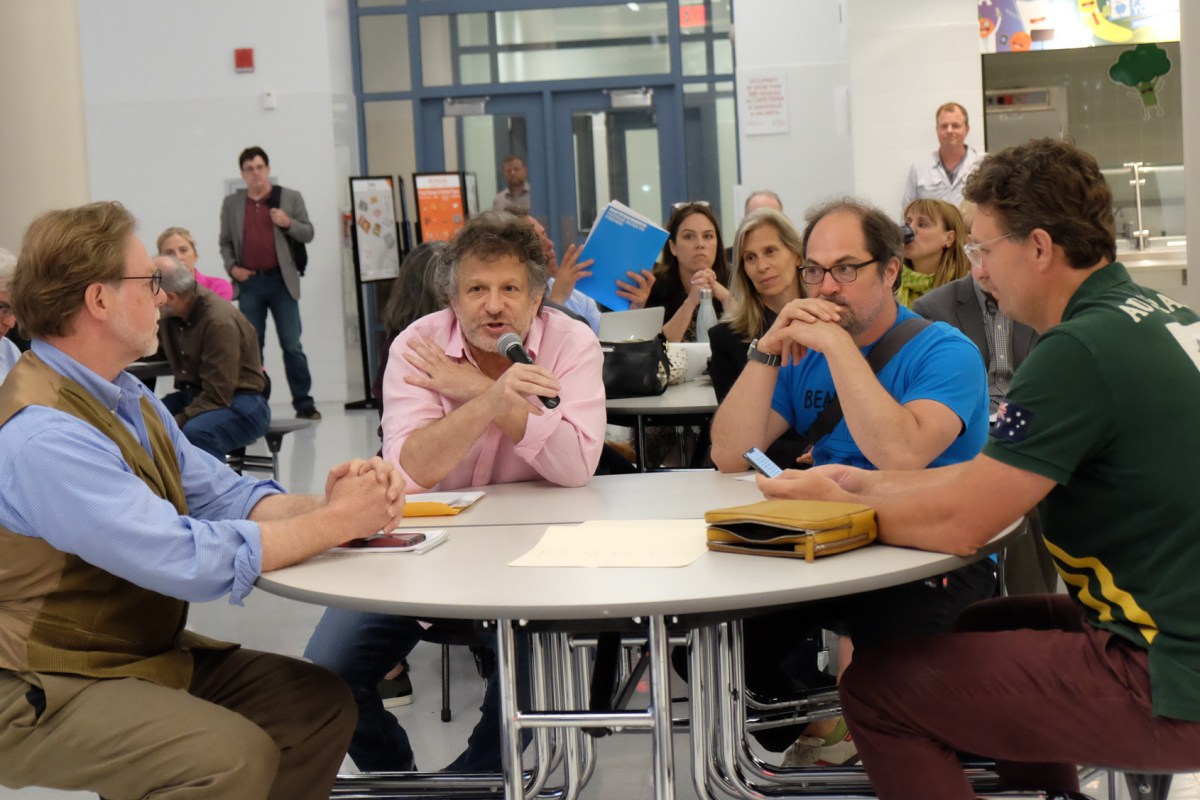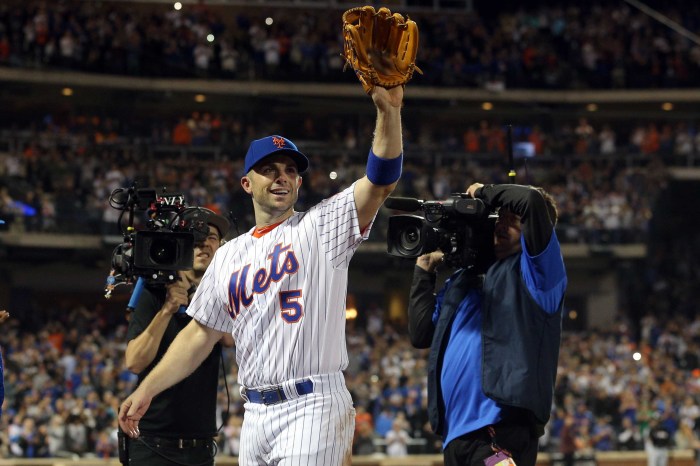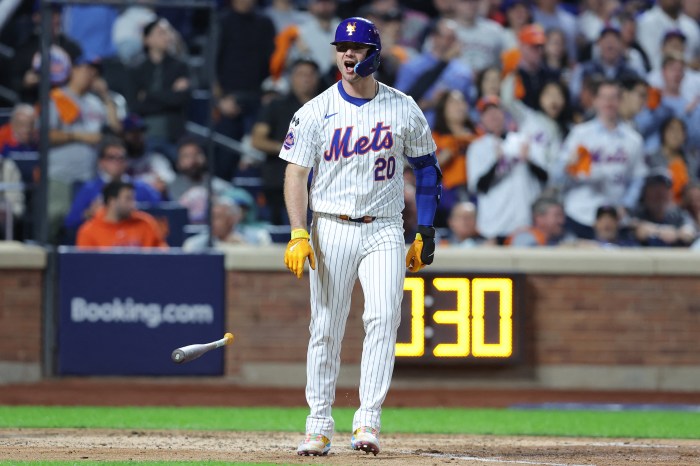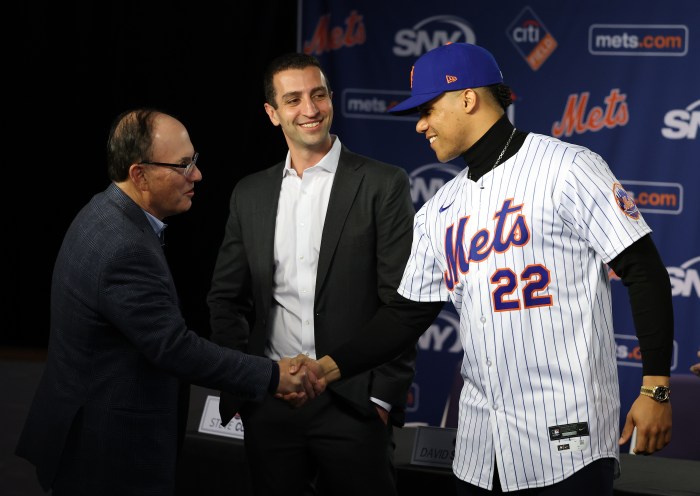BY LINCOLN ANDERSON | With community board members and youth sports advocates up in arms over the recently released draft legislative amendments for Pier 40, at least one lawmaker is saying local politicians now must “balance the various needs” of the W. Houston St. pier and Hudson River Park more sensibly.
But time may be running out. The state Legislature is set to adjourn by as early as June 19, and the Hudson River Park Trust — the park’s governing state-city authority — is putting on a full-court press to ram the amendments through.
Right before Memorial Day weekend, draft legislative amendments to the Hudson River Park Act of 1998 were publicly released — and a public forum on them was held the day right after the holiday, leaving scant time for people to digest the proposals, let alone formulate reactions.
In a first-of-its-kind process, since January, local lawmakers and/or their staff met regularly to craft guidelines for how the pier might be redeveloped, and what restrictions should be included in the park’s legislation.
A key element of the new proposed changes to the Park Act is to allow commercial offices on the 14-acre pier — a use currently prohibited under the park’s founding legislation.
Under the original Park Act, the 5-mile-long waterfront park is intended to generate its own revenue “to the extent practicable” — while Pier 40 is designated as a “commercial node,” albeit with at least 50 percent of its footprint designated for public open space. One of the current draft amendments would bump that figure up to at least 65 percent.
“Personally, I never saw the park as a profit center,” said Assemblymember Deborah Glick. “But, sadly, the city and the state created this construction whereby the park has to raise money to maintain itself.”
Like many others, Glick feels that since the park has spawned all the development that has turned the Lower West Side into the so-called “Gold Coast,” government, in return, should recognize that by funding the park more generously.
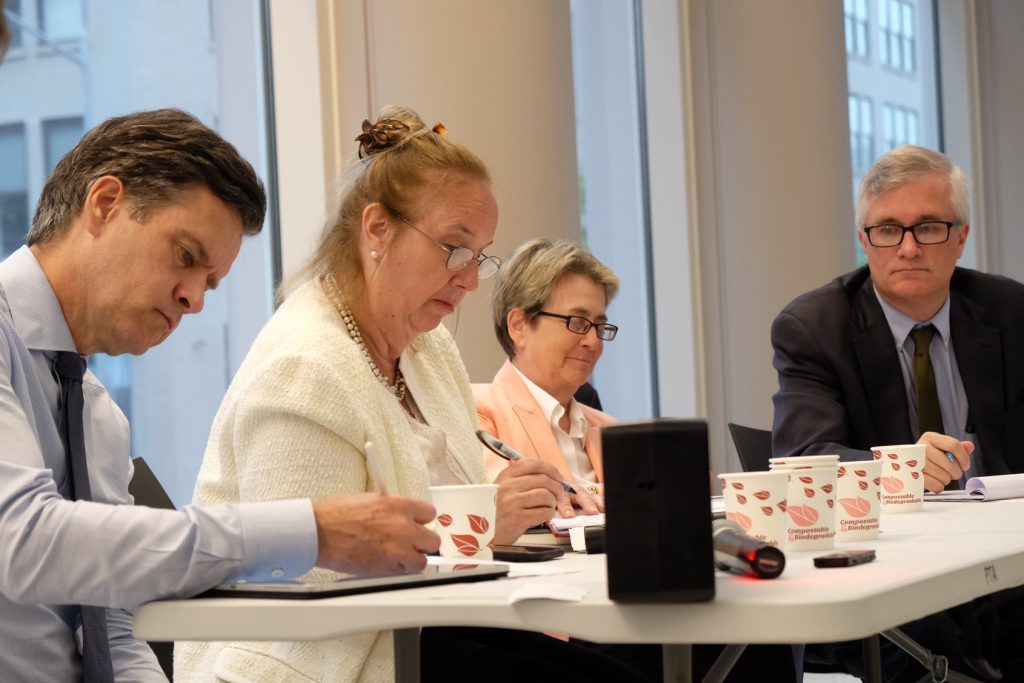
“We’ve had a great deal of development because of the park,” Glick stated, “and the city and state have both gotten major increases — in property taxes for the city and income taxes for the state. But the reality is that there are some development nodes and Pier 40 is one of them. It’s the only place we have major playing fields, so we have to preserve those.
“So my colleagues and I are trying to figure out a balance between the need to raise money and the need for open space. But we also, at the forum, heard very clearly from people that they don’t believe that building an office space on Pier 40 makes any sense.
“The Trust at the forum heard people in the community say they want more field space but they don’t want an office building. We’re going to have to talk it over and see whether there is a compromise that works for all,” Glick said. “And we’ll have to see how we can balance the various needs.”
Similarly, state Senator Brad Hoylman, who represents the area surrounding Pier 40, though not the pier itself, said he is holding out hope of “crafting a solution” various stakeholders can be happy with.
“I’m glad we were able to hear from the public before a bill was introduced,” Hoylman said of the public forum. “In the past, legislation concerning the Hudson River Park Act has dropped in the middle of the night with no public discussion.
“As for what we heard, it was definitely a broad range of comments from the public. I’m working with my legislative colleagues who represent the pier, Assemblymember Glick and Senator [Brian] Kavanagh, to help craft a solution that will both protect and expand the ball fields and park space at Pier 40 while generating the type of revenue the Trust needs.”
What Hoylman was referring to by the sudden “drop” of legislation was the package of amendments that, passed on the Legislature’s last day in session in 2013, included allowing the Trust to transfer the park’s unused development rights to construction sites on the east side of the West Side Highway.
Meanwhile, longtime waterfront park activist Tobi Bergman, as this paper first reported last week, saying he was “demoralized” by the draft legislation process, resigned from Community Board 2 at its May 23 meeting. Bergman said the local politicians “ignored” the extensive Pier 40 resolution C.B. 2 passed in April.
“No one is happy and the bottom line is it’s because it’s not good enough,” Bergman said of the draft amendments. “There is no time to fix it and it should be dropped for this term.
“The people who pushed hardest to amend the Park Act, including Congressman Nadler and Council Speaker Johnson, should now push the restart button. The park is on the cusp of becoming one of New York’s great parks, and everyone needs to recommit to its future — adequately funded but undiminished by big office buildings at Pier 40, Pier 57 and Pier 76.”
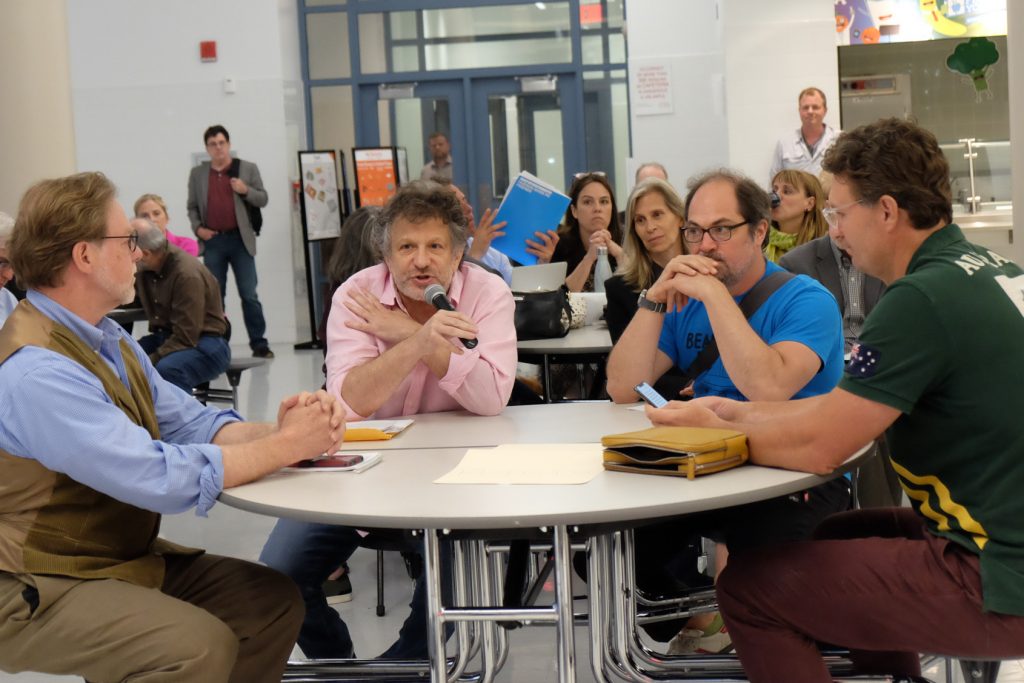
Carter Booth, C.B. 2 chairperson, gave blistering testimony at the public forum, expressing his “disappointment on a number of fronts” in the process of the draft legislation.
“Discussing a large office building in a park is a terrible idea,” Booth said. “But if that is a discussion that we have to have, limiting the scale and avoiding a new building is better than the destructive direction this legislation is sure to take things.”
Booth blasted the fact that the proposed amendments don’t require that adaptive reuse of the existing Pier 40 shed structure be considered first, before constructing a new building on the pier.
“The preference for reuse appears that it can be overridden by the Trust for any reason,” he said.
He also slammed the fact the draft changes don’t require an increase in the amount of actual sports-field space — though they do require a slight increase of nebulously termed “public open space.”
“The increase from 50% to 65% is only for ‘open space’ with no delineation on where that space be placed or how it be used and short of the 80% recommended by C.B. 2 in both 1998 when the park was created and in April,” Booth added. And he said, there is “no requirement that the open space be managed by the Trust as a true park.”
C.B. 2 also wants the number of potential office workers on the pier to be limited to 3,000 — something also left out of the draft amendments.
In addition, Booth said, there should be “clear specific language that a ULURP [Uniform Land Use Review Procedure] and EIS [Environmental Impact Statement] is required. Electeds have stated this is a given, so the language should be crystal clear.”
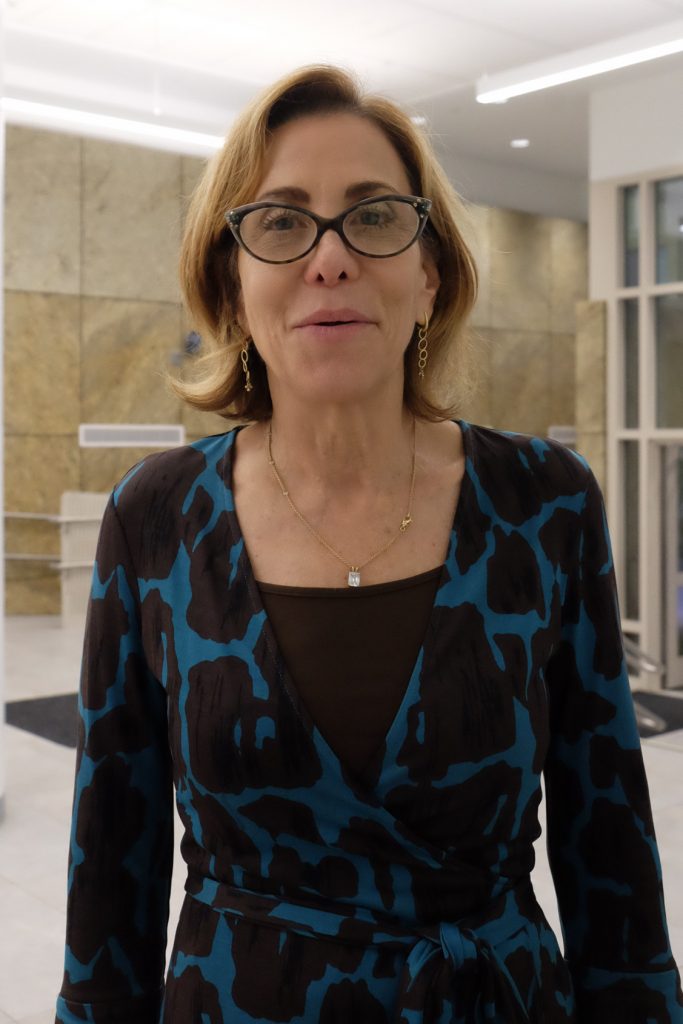
For her part, Madelyn Wils, president and C.E.O. of the Park Trust, testifying at the May 21 public hearing, said the draft amendments were “too limiting.”
“The future of Pier 40 has been in a state of limbo for more than two decades,” she said. “We do not believe the draft in its current form creates a viable path forward because of its combination of limitations and requirements. However, since I also feel we are collectively closer than ever to finding a lasting solution, I am hopeful that we can reach that goal by continuing to work together.”
Wils noted the Trust does believe Pier 40 should generate 25 percent of the park’s operating expenses. She said the authority wants to develop 880,000 square feet of “newly constructed commercial office space” on the pier, and wants the pier’s lease to be 99 years — more than triple the current permitted length — which would allow a developer to get a better loan rate.
“Adaptive reuse [of the existing pier shed] may be feasible, though perhaps less likely to meet open space and financial goals,” Wils noted.
Local youth leagues and Xavier High School, comprising the Pier 40 Champions, wrote to the local politicians crafting the amendments to say they support changing the Park Act, but that “certain changes are needed” to win their support.
In short, the Champions said they want 50 percent of the pier’s footprint — at least 320,000 square feet — to be designated active playing-field space at ground level. On top of that, they want an additional 90,000 square feet of outdoor field space and 50,000 square feet of indoor field space.
However, the leagues say they do not prioritize adaptive reuse over new construction, but “support all solutions” for the pier.
Unlike Bergman, Dan Miller, another leading waterfront park advocate on C.B. 2, doesn’t want to put off modifying the Park Act until perhaps the next legislative session, which starts in January 2020.
“I want it to continue,” he said. “I don’t want to waste a year. They are trying to find a compromise,” he said of the politicians. “I want it to go through because Pier 40 needs to be renovated. It’s an important asset, and here it is rusting into the river.”
Like Bergman, a past president of Greenwich Village Little League, Miller noted Pier 40 Champions strongly supported legalizing “air rights” transfers from Hudson River Park — which has already netted the Trust $100 million for Pier 40 from the St. John’s Terminal developers.
“We were told the air rights would be the answer to save the pier,” Miller said.
David Gruber, another veteran development watchdog on C.B. 2, echoed that it’s crucial that any project at Pier 40 go through ULURP, and that the board, in general, favors adaptive reuse of existing structures.
“We just think it’s not a development, it’s a park,” he said of Pier 40.



